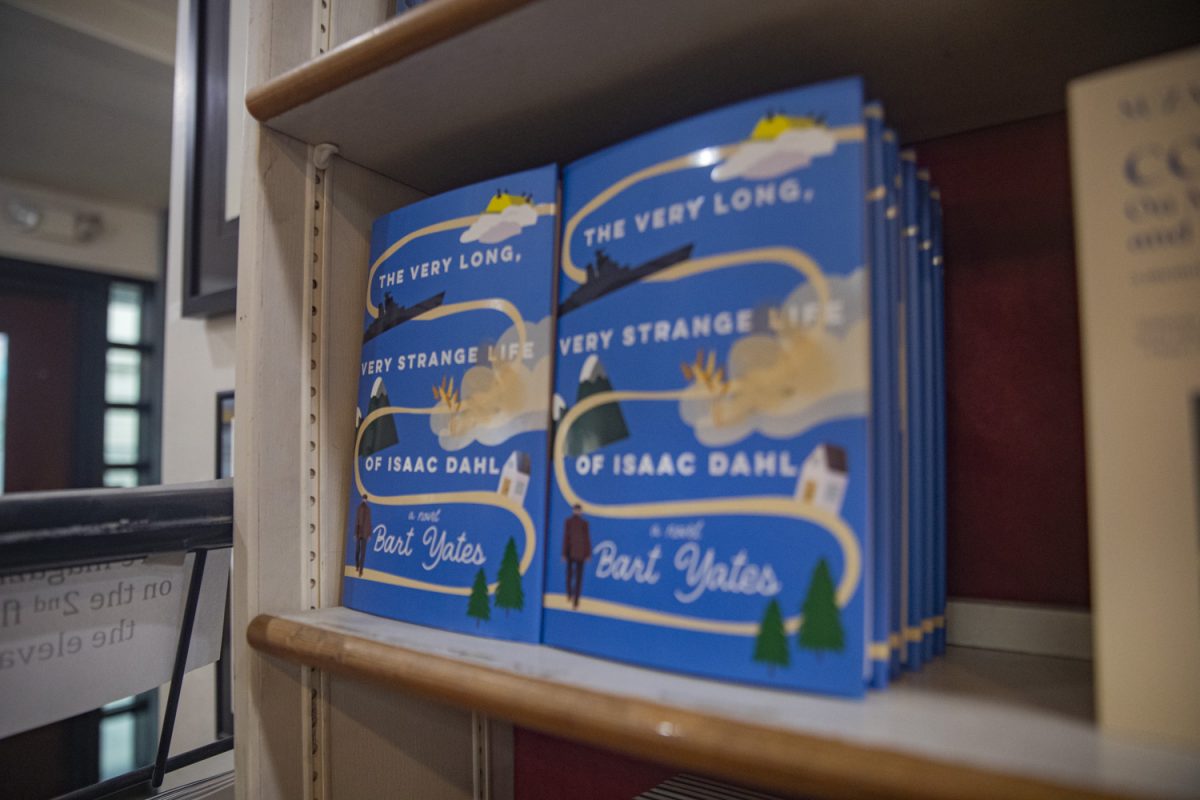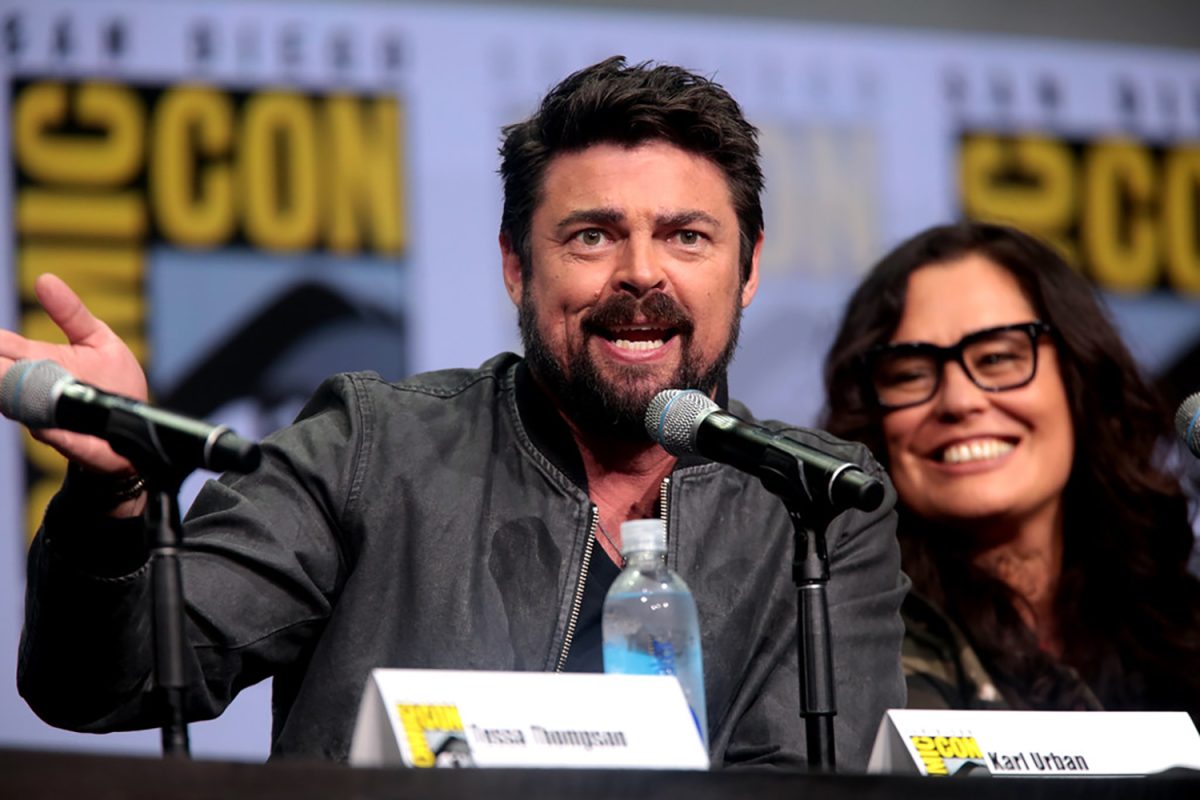It’s not an easy task to rewrite a classic. The new rendition must not only bear its predecessor’s name but also the expectations that come with it. Even more, it must be fresh enough to justify a revision, while remaining true to the original.
Audiences will see the cast and crew of The Imaginary Invalid take on such a task at 8 p.m. today in the Theater Building’s Thayer Theater. The Mainstage Series performances will continue through Nov. 23, with a 2 p.m. matinee on Nov. 17. Admission ranges from $5 to $17.
The University of Iowa’s reimagining of Molière’s The Imaginary Invalid depicts a modern rendition of the classic play following a man haunted by the constant thought of illness.
"Our production is a mash-up of contemporary and classic," said Carol MacVey, the play’s director. "It’s based on the Molière play, and we’ve kept the same structure and characters, but some of the names have changed, and the ending has been revised."
The Imaginary Invalid was originally published in 1673 as a satire of medicine and doctors. The play follows Argan, a hypochondriac who insists that his daughter marry a doctor, thus producing a matrimony that would secure him constant access to whatever medicines or treatments he might require.
"My favorite aspect of Argan would be his relate-ability and how there’s some aspect of him that everyone can sympathize with," said Nathan Wasson, who portrays Argan. "We’ve all gone to extremes at some point or another in search for answers. Sometimes the line between the truth and a charade can become extremely blurred. It’s interesting to see how this plays out for Argan."
Because of the age of the original script, the production delivers the story fused with a modern setting to make the medicines used in the play relevant to present-day audiences.
"Most farce is topical and timely, and changes need to be made," MacVey said. "For instance, what was considered orthodox medical practice in Molière’s day is radically different from contemporary methods. I don’t think many people would laugh at the bleeding jokes in the original script, but they might laugh at a New Age therapy technique."
Another element of the play that has received an update are the musical interludes that were featured in the original production.
"I have worked on finding the music for the quartet and finale of the piece, as well as, working with Emily Christoffersen on the arrangements of the Bach piece and musical interludes throughout the show," said Brooke LeWarne, the production’s musical director and a member of the quartet.
While working on the score, LeWarne and assistant music director Christoffersen tinkered with two existing songs and additionally produced two original pieces.
"I really didn’t know what to expect or what the end product would look like for the music," Christoffersen said. "The first couple weeks, it felt as if the cast spent all their time learning this incredibly difficult piece by Bach for part of the finale. A song that would be difficult to master in a month for the most skilled, and they learned it in [roughly] three weeks. I couldn’t be more proud."
With certain parts of the play still being ironed out during rehearsal, it was occasionally required to alter some of the songs’ content. This was true with the original songs especially.
"Sometimes I’d have to go back and rewrite something, but [the members of the quartet] were all so flexible and really worked as a team," Christoffersen said. "My favorite piece is probably ‘Wayward Heart.’ It’s one of the originals. The lyrics are by dramaturge Kristi Banker, and they are perfect. It was the song I got to be the most creative with for the show."
Because of the nature of the play, the need to create new content for it expanded beyond just the music.
"Once we got into rehearsals, I took over most of the script’s revisions," MacVey said. "We would try something in rehearsal, and if it didn’t work, I’d have to revise that same night and bring something new into rehearsal the next day."
Working on the play demanded both new ideas and creativity from everyone involved. The cast and crew agree that shaping this play was very much a collaborative effort.
"Carol has created a supportive environment that has fostered creativity and collaboration from everyone involved," Wasson said. "It’s fun to walk into a room where you can freely play and try new things in an effort to effectively tell this story in the most entertaining way possible."
MacVey set four goals for the production while grappling with the already significant endeavor of retelling one of Molière’s most famous works.
"This may seem odd, but I wanted to produce a comedy that made people laugh a lot," she said. "I also had this idea about the set being able to move and even dance. I wanted to include song and dance in a Molière play, because those were aspects of Molière’s original productions. I wanted to offer an experience of Molière that would make people appreciate his genius as an innovator in theater."
Inhabiting a space that demands so much creativity and innovation has given those involved a chance to grow — more so than they might have with a fully prepared script.
"This production has stretched everyone, and we have all met the challenge head-on,"
Christoffersen said. "This show is my first new play, and it’s been an amazing experience. I definitely cannot wait till I get the opportunity to do something like this again."
After their weeks of work, the actors and crew are thrilled to present the show for audiences.
"[I look forward to] hearing the audience laugh and sensing that they love the actors and the production," MacVey said. "I’d love for them to think ‘funny’ when they hear the name ‘Molière.’ "
THEATER






